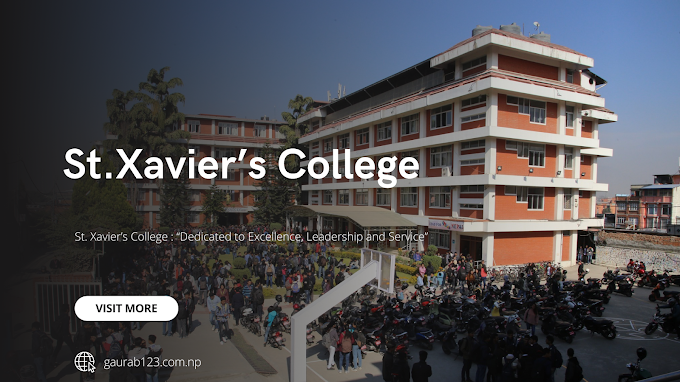Class 11 What is Poverty Exercise
-Jo Goodwin Parker
Main Summary
An anonymous author, Jo Goodwin Parker, from West Virginia, wrote a poignant essay titled "What is Poverty?" detailing her harsh experiences of living in poverty. She describes the multifaceted nature of poverty, encompassing lack of essentials like food, healthcare, sanitation, and education. Parker's narrative portrays her struggle to provide for her family, hindered by financial constraints and absence of assistance. She emphasizes the grim reality of poverty's impact on dignity and future prospects. Despite her hardships, Parker seeks understanding rather than sympathy from readers, illustrating the challenges and humiliation she faces while striving to secure a better life for her children.Understanding the text
Answer the following questions.
a. What is poverty according to Parker?
➜ According to Parker, poverty means not having enough hope, proper food, medical care, clean sanitation, and proper education. It's like a corrosive substance that erodes one's pride, dignity, well-being, and future prospects.
b. How is poverty difficult for Parker’s children? List some specific examples.
➜ For Parker's children, poverty presents significant challenges. They endure a life of hardship due to insufficient access to nutritious meals, education, clothing, and medical attention. Parker shares that her children's health is deteriorating. Their breakfast often consists of plain cornbread without oil. They wear dirty clothes and lack proper schooling. Parker recounts a distressing incident where she returned from work to find her youngest child covered in flyspecks with an unchanged diaper. Her other children faced dangers like playing with broken glass or near a lake.
c. How does Parker try to obtain help, and what problems does she encounter?
➜ Parker seeks assistance by reaching out to various individuals and organizations, often with outstretched hands. However, her efforts are hindered by the scarcity of funds. She encounters difficulties in identifying suitable sources of aid, leading her to navigate through different organizations. This requires time, and she must repeatedly recount her distressing situation.
d. Why are people’s opinions and prejudices her greatest obstacles?
➜ People's opinions and biases become Parker's major obstacles. These prejudices prevent her from receiving the help her family needs. Many individuals lack awareness of the harsh realities of poverty and disregard the suffering of impoverished people. Prejudices persist, hindering her from accessing the support she desperately requires.
e. How does Parker defend her inability to get help? How does she discount the usual solutions society has for poverty (e.g., welfare, education, and health clinics)?
➜ Parker defends her inability to obtain help by sharing her personal experiences of poverty. She challenges society's conventional solutions to poverty, such as welfare, education, and health clinics. She recounts how she has had to move between multiple agencies seeking welfare assistance, enduring embarrassment and repeating her story. School programs meant to alleviate poverty lack effectiveness, as her own children's conditions after attending school indicate. Health clinics are distant, requiring her to walk miles for medical care. Asking for help often results in negative assumptions from others, further isolating Parker from these essential aspects of support.
Reference to the context
a. Explain the following:
Poverty is looking into a black future.
➜ The writer Jo Goodwin Parker conveys in her essay that poverty leads to a bleak future. She uses the phrase "Poverty is looking into a black future" to illustrate the harsh reality of poverty from her perspective. Parker wants her readers to understand the grim and challenging aspect of poverty. It forces individuals into a life of destitution, making it extremely difficult to secure basic necessities like food. Hope for a better future diminishes, leaving them in a state of despair and uncertainty. Poverty extinguishes the prospects of a brighter future.
b. What does Parker mean by “The poor are always silent”?
➜ When Parker mentions "The poor are always silent," she means that impoverished individuals are often voiceless and powerless due to their lack of financial resources. Money is a crucial factor, and its absence weakens the poor. They are forced into silence when interacting with others, as their limited means prevent them from asserting themselves. The phrase highlights the helpless position of the poor, who must endure others' opinions and decisions while being unable to voice their own.
c. What writing strategy does the author use at the beginning of most of the paragraphs? Do you notice a recurring pattern? What is it?
➜ The author consistently uses the repetition strategy of beginning most paragraphs with the phrase "Poverty is." This recurring pattern is noticeable throughout the essay. The repetition establishes a connection between the writer and the readers, creating an informal conversational tone. By employing this technique, Jo Goodwin Parker effectively communicates her message in a relatable manner. Her writing feels like a candid conversation, contributing to the essay's impact.
d. How does Parker develop each paragraph? What details make each paragraph memorable?
➜ Parker employs a consistent structure in developing each paragraph. She starts with her repetition strategy, beginning with "Poverty is," and then proceeds to share her personal experiences related to the topic. Each paragraph is made memorable by the vivid details of her painful encounters and the harsh conditions associated with poverty. Her anecdotes and observations bring depth and authenticity to her descriptions, making the paragraphs impactful and memorable.
e. In the final paragraph, how does the author use questions to involve the reader in the issue of poverty?
➜ In the final paragraph, the author uses questions to engage the reader in the issue of poverty using an informal conversational approach. By posing questions, Parker involves the readers emotionally and intellectually. Her persuasive style encourages readers to shift their perspective and view the poor with empathy and a sense of urgency rather than pity. The questions elicit emotional responses from the readers and draw their attention to the struggles depicted in the essay.
Reference beyond the text
a. Define a social problem (homelessness, unemployment, racism) imitating Parker’s style.
➜ Homelessness is the state of sleeping on the streets, exposed to the elements. It erodes your well-being, making you feel vulnerable and devoid of dignity.
Unemployment is a situation of not having a job, leading to feelings of shame and lowered social status. Being unemployed subjects you to mockery and disdain from others.
Racism is a degrading reality, where prejudiced individuals belittle and discriminate against you due to your skin color. This bias fosters a sense of humiliation within society.
b. Using adjectives to highlight the futility of the situation, write a short definition essay on Growing up in Poverty.
➜ Growing up in poverty is a challenging circumstance marked by the absence of essential resources. Despite differing opinions, I firmly believe that experiencing poverty during one's upbringing is disheartening. Happiness remains elusive in the face of financial hardship. The constant struggle against poverty proves wearisome, leaving little room for pursuits that bring joy. The journey through poverty is intricate and demoralizing, leaving you perpetually perplexed by life's inequities. Living in poverty fosters a daunting atmosphere filled with struggles and obstacles. This reality breeds exhaustion and apprehension, where difficulties perpetually loom.



















If you have any doubts, Please let me know